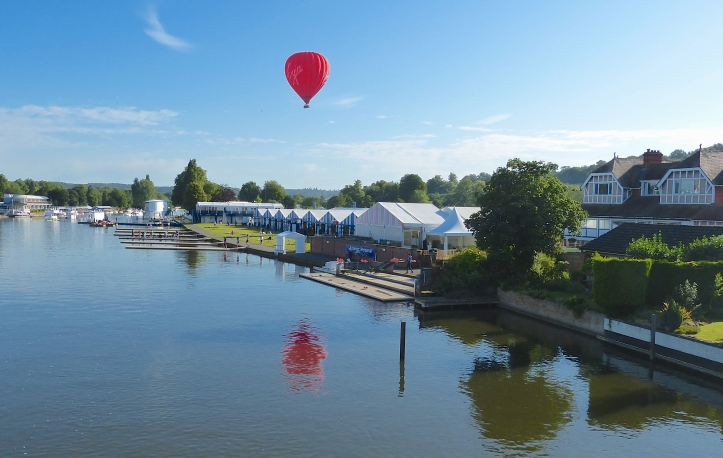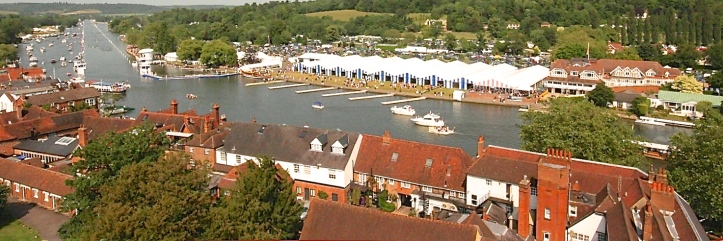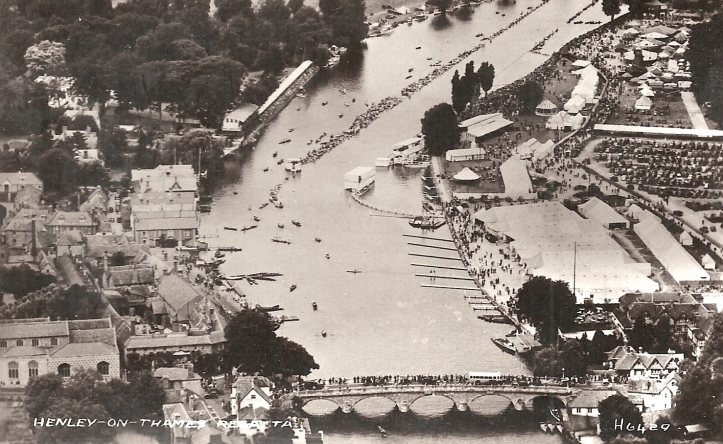
29 June 2016
Tim Koch has been to Henley to check that the course is straight:
The only thing currently preventing the country formerly known as the United Kingdom of Great Britain and Northern Ireland from going to hell in a handcart is that the wheels have just fallen off the said cart. However, some things attempt to continue ‘business as normal’ and thankfully this includes Henley Royal Regatta.

Now in its 177th year, the great five-day rowing and social occasion starts today, Wednesday, 29 June. Some of us will be lucky enough to attend in person but those unfortunates not within striking distance of the Thames Valley will, for a second year, be able to view the action via the professional and innovative broadcast produced by the Sunset and Vine company. A press release from Henley gives news of more platforms on which to view this year’s racing from the world’s most famous regatta:
BT Sport UK has secured the rights to broadcast Henley Royal Regatta live for the first time this year as the event capitalises upon the success of the 2015 broadcast project. Live coverage of racing will begin on BT Sport at 1300 BST on Wednesday 29th June, Thursday 30th and Friday 1st July, with the full day’s racing shown live on Saturday 2nd and Sunday 3rd of July. Coverage of the event on BT Sport will be a valuable update to the Regatta’s YouTube coverage, which streams the whole event live around the world. BT Sport is available on BT TV, Sky and Virgin Media television platforms in the UK, and also for Virgin Media Ireland in the Republic of Ireland.
While the ability to view the racing from anywhere in the world is a wonderful thing, the experience is considerably enhanced by the amazing overhead shots from cameras carried by drones which allow the viewer to very accurately see the relative positions of the boats. As someone who has had the privilege of photographing a lot of races on the Thames Tideway from a following launch, I am particularly aware of the problem of parallax, the difference in the apparent position of two or more objects when viewed at an angle from the side.

In many ways, rowing is not a great spectator sport. For most of its history, only a part of a race could be viewed by those on the bank or moored on the water. A few events attempted to mitigate this problem. The straight Henley reach has long had its 1 – 2 indicator boards which show the relative positions of boats at various points and, in the past, the Oxford – Cambridge Boat Race had various indicators along the course which were raised and lowered to indicate the leader to those with line-of-sight.

The coming of television produced some improvement for those wishing to see racing in close up from start to finish, though few events were covered and the problem of parallax remained. Eventually, the Boat Race did have aerial pictures from helicopters when weather permitted but this was an expensive, inflexible and potentially intrusive way of getting, these shots. Henley’s use of modern technology combined with the Internet has changed all of this, producing easily accessible images that could barely be imagined not so long ago.

Before the twentieth century, views of Henley Regatta from on high could only be had from the tower of St Mary’s Church or from hot air balloon flights (which, as the first picture shows, are still happening today). With the coming of heavier than air flight, and especially after the First World War, aerial photography became popular, particularly at events such as Henley.



On the subject of viewing Henley Royal Regatta, the excellent and independent local newspaper, the Henley Standard, recently carried a report that will be of interest to many fans of the regatta:
A new public enclosure could be set up at next year’s Henley Royal Regatta. The regatta’s management committee has asked South Oxfordshire District Council for a licence for another viewing area at Fawley Meadows (see the drone picture above). This would be aimed at families who want to watch the rowing in a more casual setting and could include a grandstand with tiered seating and TV screens showing highlights from the previous day. Children’s games and activities could be provided away from the river edge and individual pitches would be available for schools and youth rowing clubs to hire. There would be a bar and stalls selling food and soft drinks. The enclosure would open at 8am, half an hour before the racing typically starts, and the bar would shut at 10pm. Regatta secretary Daniel Grist said the idea had been discussed several times in recent years and the committee decided to press ahead after last summer’s televised coverage of the racing proved popular.

© Photography: Tim Koch (unless otherwise notes).
